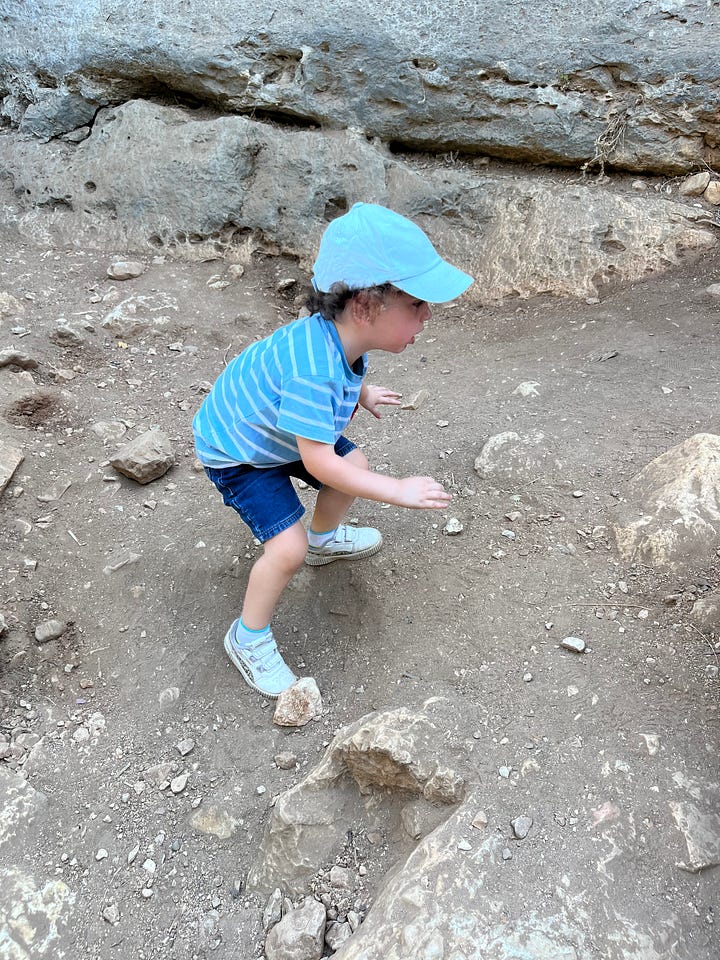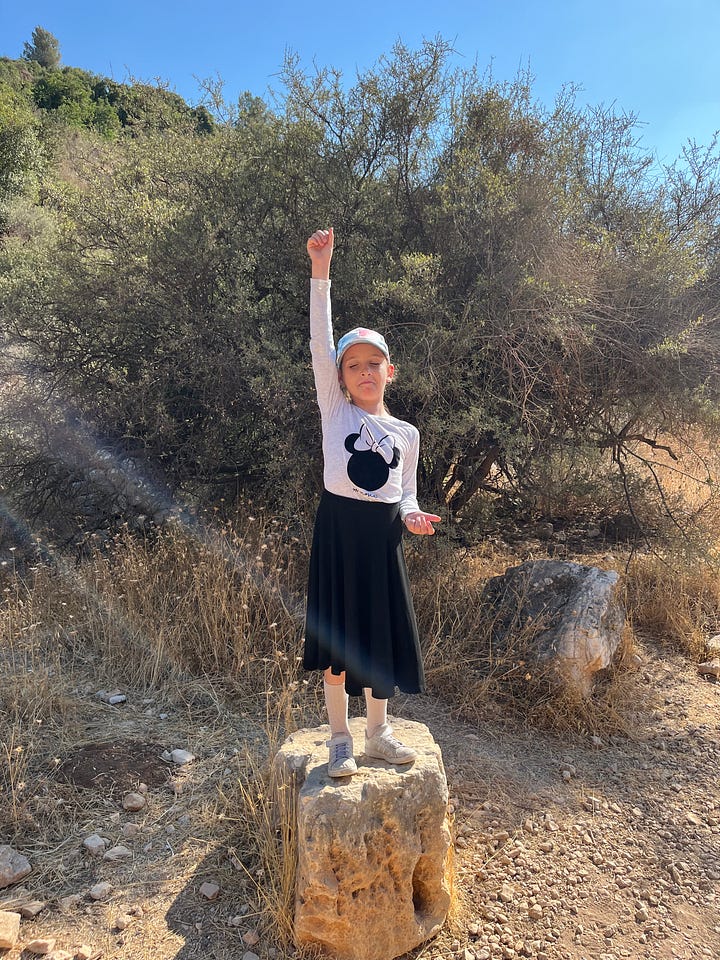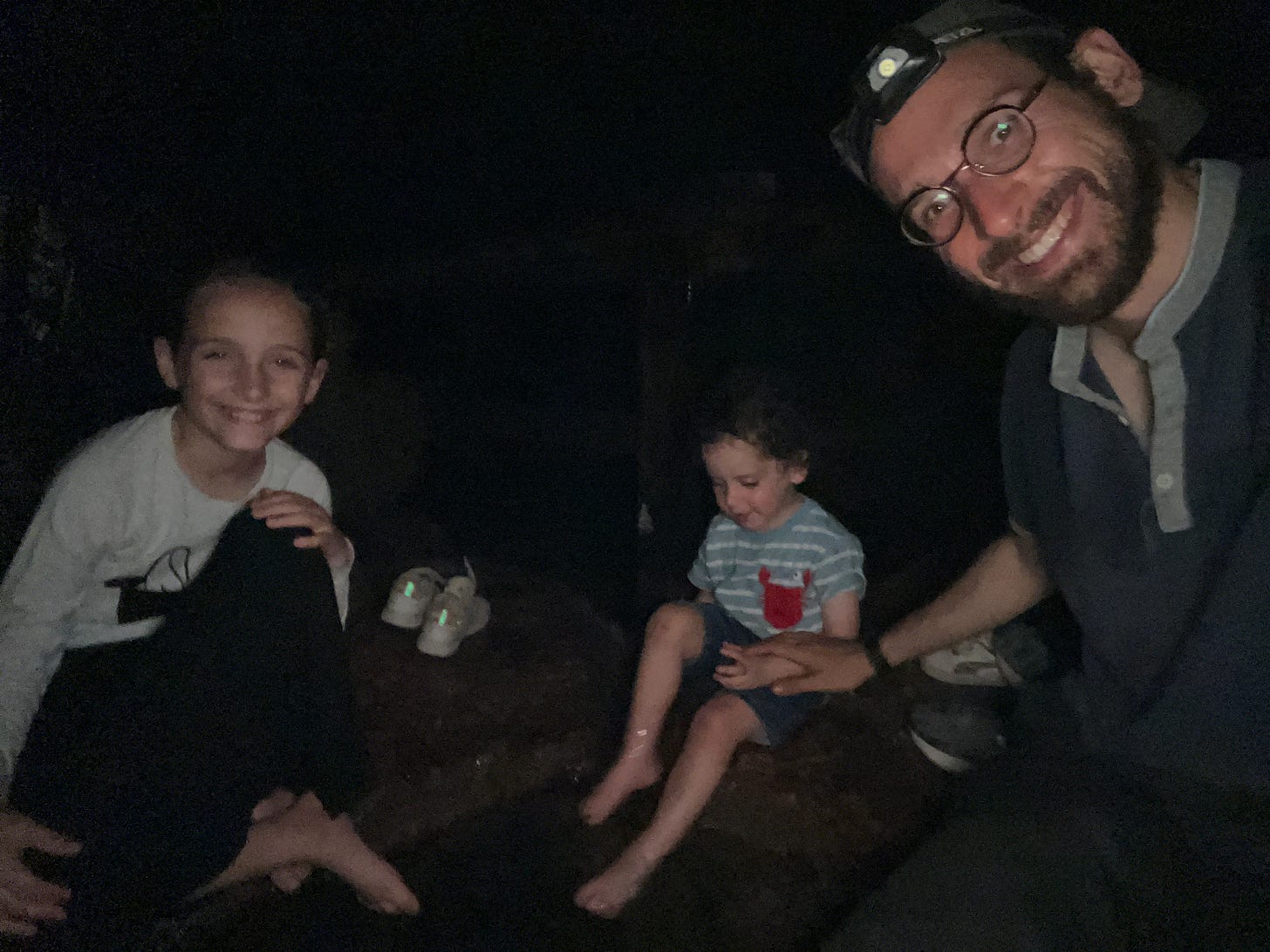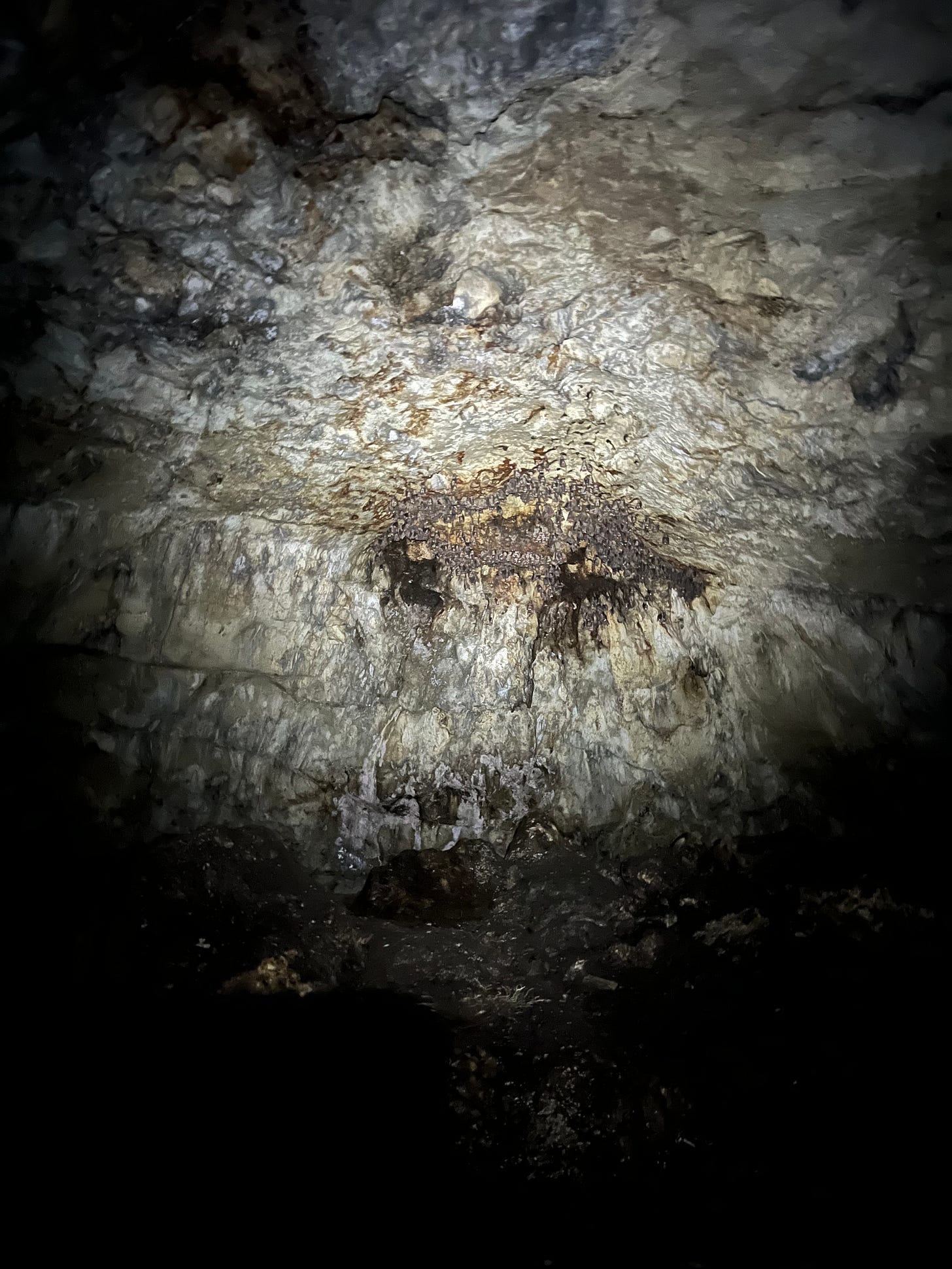Swarms of Bats in a Huge Cave, a Cold Underground Pool, and Israel's Ancient History.
Let's walk through the Twins Cave right outside Ramat Bet Shemesh.
Big news, Healthy Jews!
The Twins Cave (sometimes called by locals the Bat Cave) is due to open this Tuesday, on April 1.
You see, this legendary marvel of nature, located right down the road from Ramat Bet Shemesh, is home to thousands of incessently squeaking bats. Some hibernate through winter, so the Israel Nature Authority closes the cave from November through March to let them rest in peace.
Come, let’s explore together the Bat Cave and its storied history.
After a short 10 drive from our home in RBS, we park in an empty dirt lot and begin the approximately 1-mile walk deep into the Jerusalem mountains, with the beautiful hills rising sharply on both sides of the trail.


After plowing through the bees usually hanging out at the cave’s mouth (I don’t suggest visiting if you’re dangerously allergic), we follow the wooden steps deep under the earth.
The first thing we notice is the cool, damp air.
The second is the loud buzzing (or is it hissing?) of swarms of bats hanging on the cave roof and flying all around the darkness.
After a solid 5 minutes on the wooden walkway, all the time descending deeper into the bowels of the earth, we reach the end at a cold, fresh pool of delicious spring water. Legend has it that sometime in antiquity a childless woman drank from this pool and was blessed with twins, hence the name Twins Cave. (Another story has a local sheik hiding a treasure in the cave and commanding his twin sons to go find it. When they fell in a crevice and died, he named the cave after them.)1
Archeologists have found some incredible treasures in the numerous crannies of the Twins Cave, mostly coins (the largest hoard ever found in Israel) and weapons from the Bar Kochva era. Apparently our ancestors hid here from the marauding Roman legions.
They even found some house keys, suggesting that our ancestors thought they’d return home after the war. Little did they know that the entire Shfelah area would lay empty of Jews for the next 1,800 years.
Perhaps the most fascinating find was signs of scraping on the cave’s alabaster walls, indicating that these unique mineral deposits had been quarried here. Current research suggests that King Herod’s massive alabaster bathtubs were mined right here in this bat-filled cave outside of Bet Shemesh.

After climbing out of the cave and readjusting to the bright sunlight, we walk 5 minutes to the stone slides, and enjoy a few minutes there until the bees find us and we run for our lives.
Navigating to the Twins Cave is relatively easy. If you’re in the area, maybe check it out over the upcoming Pesach holiday.
Even better, we can stop by there on our next foraging walk together. What do you say?
Thank you for reading Healthy Jew.
Here are 2 great paths to continue the journey:
Also check out this intro and index to explore hundreds of posts about our 3 Healthy Jew topics: Wellness with Wisdom, Land of Life (Israel), and Sensible Spirituality.
Finally, always feel free to reach out here with any comments, questions, or complaints:
I look forward to hearing from you!
Be well,
Rabbi Shmuel Chaim Naiman
Please note: All content published on Healthy Jew is for informational and educational purposes only. Talk to a qualified professional before taking any action or substance that you read about here.
https://he.wikipedia.org/wiki/מערת_התאומים








